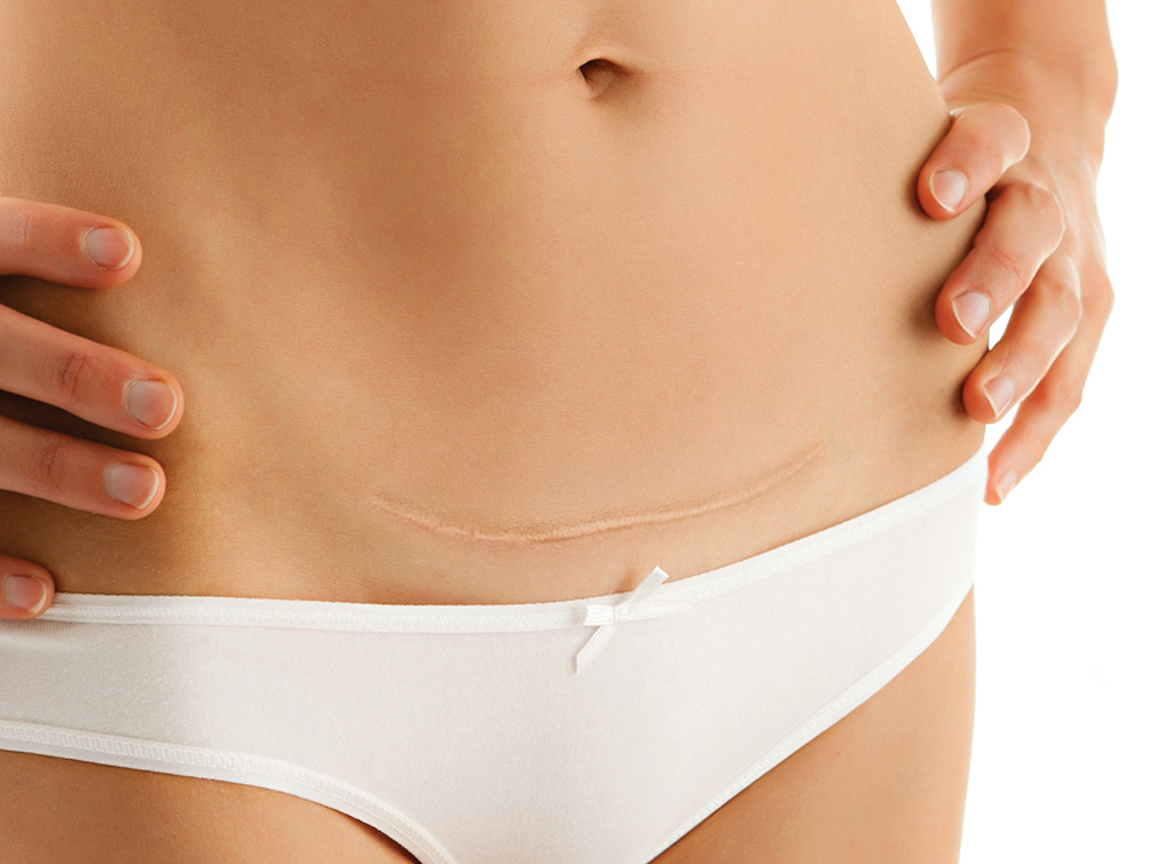Have you had a C-section, or are planning one soon? You need to know how to look after your skin and scar after the procedure.
Most C-section scars heal very well, resulting in just a faint line just above the public hair line, that can usually be hidden by underwear and bikinis.
What does a C-section scar look like?
In almost all cases the incision will be a small, around four to six inches, horizontal line that traces well below your belly button.
In very rare cases, mostly in emergency situations, your doctor may make a vertical incision instead.

How are C-sections closed?
The incision on the uterus is always closed with dissolvable stitches, but there are three ways doctors close your skin:
Staples
In this case, your doctor will use a skin stapler to close the incision with metal staples — a popular choice for doctors because it’s the easiest and quickest option.
Stitches
Using needle and thread, your doctor will sew the incision together. While this method takes a little more time (about 30 minutes), some experts believe it could be a better option.
Glue
Surgical glue seals the skin, which is then topped with a transparent dressing. Some experts say that glue heals fastest and leaves the finest, least visible scar. But it’s not always an option.

What kind of scars are there?
Most of the time, C-section scars heal properly, but sometimes your body’s healing process goes into overdrive, which can lead to problems with scarring — especially if you’re younger (under 30) and have darker skin:
Keloid
A keloid can arise when scar tissue extends beyond the original boundaries of the wound, which can result in lumps of scar tissue around the incision.
Hypertrophic scar
A hypertrophic scar is thicker, firmer and usually more raised than a normal scar, but unlike a keloid, it stays within the borders of its original incision line.
/about/GettyImages-522096961-581a3d033df78cc2e83acc65.jpg)
How do I help heal the scar?
Keep it clean
Once a day, during your shower, let soapy water drip down your wound. There’s no need to waterproof it, and you should avoid vigorous scrubbing. When you’re done, gently pat the area dry with a clean towel.
Air it out.
Air promotes healing in skin injuries, so whenever possible, expose your scar to air.

Keep your appointments
If your incision was closed with stitches that don’t dissolve, be sure to go to your follow-up appointment so your doctor can remove them. Leaving the stitches in for longer than recommended can lead to a funky-looking scar.
Hold off on exercise
You need to take it easy to allow the scars on your uterus and your abdomen to heal. Try to avoid bending or twisting your body, or making sudden movements as much as possible, and don’t pick up anything heavier than your baby.

When should I seek medical attention?
If you experience any of the following symptoms, you should seek medical attention immediately:
- Redness or swelling of the incision.
- Fever.
- Oozing or drainage from the incision site.
- Foul smell from the area.
- The wound becomes hard
- Increasing pain around the wound
- Your incision splits open.









